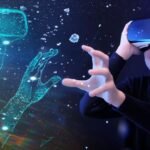New WEF research identifies revolutionary healthcare AI applications
IBM and the All England Lawn Tennis Club have collaborated to introduce new AI-powered features for the Wimbledon digital fan experience at this year’s Championships. These features include generative AI commentary and AI draw analysis, aimed at enhancing engagement and providing insights for tennis enthusiasts.
The AI commentary feature, developed in collaboration with IBM iX, offers fans watching match highlights videos the option to receive audio commentary and captions of key moments. This tool aims to provide a more insightful experience for fans catching up on matches through the Wimbledon App and wimbledon.com. The AI has been trained using foundation models from IBM’s enterprise AI and data platform, WatsonX, and it generates narration with diverse sentence structures and vocabulary to enhance the informative and engaging nature of the clips.
Another innovative feature introduced this year is the AI draw analysis, which is a first of its kind in tennis. Leveraging AI, this feature provides a statistic to determine the favorability of the path to the final for each player in the singles draw. It takes into account factors such as potential match-ups against future opponents and the player’s position in the draw compared to competitors. This unique insight enables tennis fans to uncover anomalies and potential surprises in the singles draw that may not be evident solely by considering the players’ rankings, fostering more debate and engagement within the fan community.
Jonathan Adashek, SVP of Marketing and Communications for IBM, highlighted how these technologies can help major sporting events like Wimbledon grow their audiences through outstanding digital experiences. IBM’s Watson AI technology powers the suite of AI-powered tools available on the Wimbledon App and wimbledon.com, including the IBM Power Index Leaderboard, IBM Match Insights, and Personalized Highlights Reels and Recommendations. These tools analyze over 100,000 data points from every shot played throughout the tournament, providing fans with a deeper understanding of the players, their opponents, and likely outcomes. The constant updates and tailored insights keep fans engaged throughout the tournament.


































